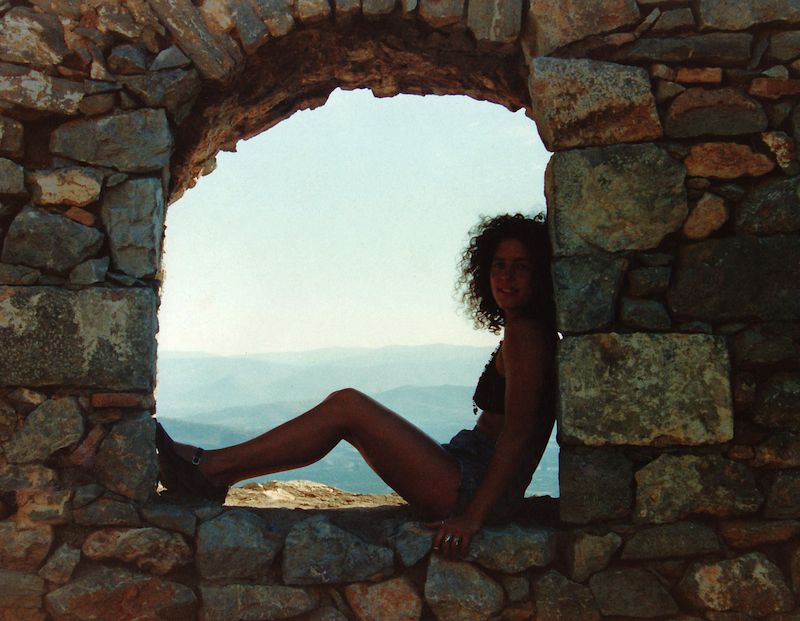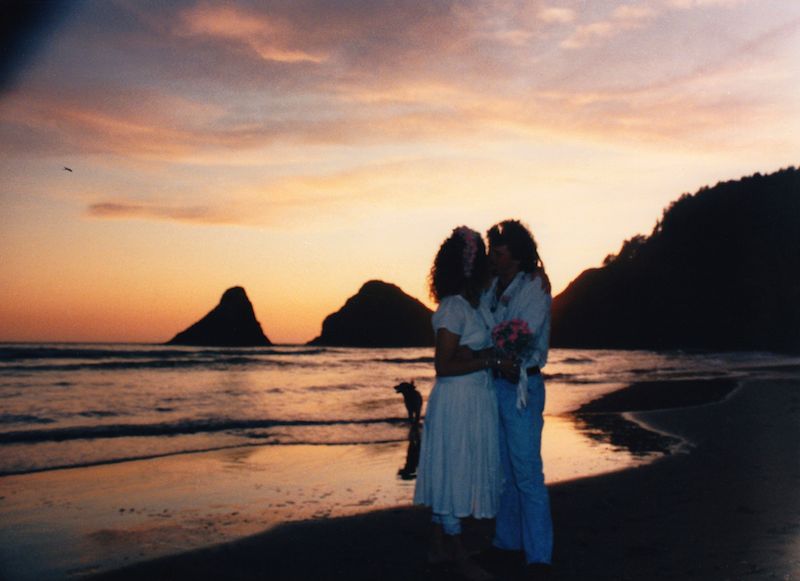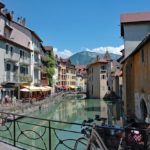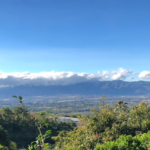Running Away with the Circus: A Conversation with Author Kathleen Cremonesi

In Love in the Elephant Tent, Kathleen Cremonesi dedicates her debut memoir to “all the girls with turbulent minds and untamed hearts who danced by themselves when no one asked.” Backpacking across Europe in her early 20s, Cermonesi’s own heart led her to find love and adventure by running away with an Italian circus.
Forced to navigate the hierarchical structure of the circus world, Cermonesi struck her own path, becoming a resentful showgirl, fearless shark-tamer, and chef to many of the exotic animals. Beyond the romance she finds with Stefano, the handsome elephant keeper, it is the circus animals that bring her the most joy.
Cermonesi’s own journey of self-discovery reminds us all that sometimes it is good to run away, as long as you are running towards something.
Why did you decide to write a memoir?
When I first moved back to the States, people who heard Stefano’s thick Italian accent often asked where and how we met. Once we mentioned the circus, their curiosity grew, and I heard “you should write a book” so many times that I finally decided I’d do just that
Except that I’d run off first with the Grateful Dead and then with an Italian circus instead of going to college, so I had to learn how to write first. Let’s just say it was a big project, but I really enjoyed the process and stuck with it. I learned a lot about myself and fell in love with my husband over and over again. Even if a publisher had never picked it up, I wouldn’t feel as though the time was wasted. Fortunately, ECW Press did, and the book was released in May 2015.
Each chapter in your book begins with excerpts from your travel journal. Did you find yourself journaling a lot while living on the road? How did your journal help with writing your memoir?
The journal I kept during my circus years was my first real journal, and it encompasses four-and-a-half years of my life. Rather than recording daily movements and general thoughts, most of the entries are explosions of my feelings – love, lust, confusion, frustration, longing, happiness. I asked a lot of questions of myself and the universe, and I used those pages to speak to far away friends who I missed. Sometimes I wrote often; other times a month passed between entries. If a particular feeling or question burned deeply within me, I wrote it in that journal.
When I first started my memoir, I expected that it would be more of a travelogue than a love story. And when I looked to my journal for help, I immediately thought that page upon page of my emotions would be useless. Then, as the story focused on my emotional journey as much as my physical journey, the journal became invaluable.
I put myself in situations that stripped me emotionally naked and forced me to reassess what was important to me.
Recreating my physical travels and specific events was easy to do through pictures, Stefano’s input, and a map we used to record each place we stopped. What I never could have recreated years later were the exact thoughts that were going through my mind at the time. Without that journal, there wouldn’t be a memoir.
Do you have any advice for those who want to write about their own adventures?
Presuming that the writer is considering sharing their work with others, I would suggest that your writing will interest more people if you flesh out your physical journey with your emotional growth, how those experiences changed you, and how your interactions with others changed your perspective on yourself and the world. In a nutshell: keep a journal!
How did you decide to donate part of the book sales to Elephant Nature Park in Chiang Mai, Thailand, and the Elephant Sanctuary in Hohenwald, Tennessee?
Elephants have given both Stefano and me so much. They are the reason Stefano – and therefore I – stayed in the circus. It was a time in our lives when we both learned many life lessons that have influenced the last 25 years. I couldn’t publish a book detailing our experiences with elephants without giving something back.
I have high hopes that Love in the Elephant Tent will educate people on what life behind the velvet curtain is really like for exotic animals and help everyone understand how important it is to pass legislation that bans traveling shows from keeping such animals in those conditions.
As far as those two sanctuaries in particular, Stefano and I had heard of the Elephant Sanctuary in Tennessee many years ago – we read everything on their website, watched the ele-cam, and wanted to find a way to help their growing herd.
Then, in 2009, while traveling in Thailand, serendipity brought us to The Elephant Nature Park. We mentioned to the owner of our hotel in Chiang Mai that we hoped to see elephants up close and personal – but not in a touristy scenario: no elephants painting pictures or hauling trekkers around on their backs. Once the hotel owner heard about our history with elephants, she said The Elephant Nature Park was the only place she’d recommend, and their office was just a few blocks away. We headed there right away with her warning following us as we left: “Don’t expect to be able to go for more than a day trip – volunteer spots fill up months and months in advance.”
When we entered the park’s booking office, the agent was arranging to pick up a couple who had to leave the park unexpectedly, five days short of their intended stay. Stefano and I had five days left before we were scheduled to return to the US. We paid our fees, were picked up at the hotel the following morning, and spent the end of our trip in a bamboo hut while cleaning, feeding, and learning about the herd at Elephant Nature Park. They literally took us directly from the park to the airport.
It was one of the most beautiful and rewarding experiences of our lives – the first time we’d ever been able to see elephants living freely, forming their own family groups, and just being elephants. We’ve been donating a small amount to the park every month since 2009, and it was a natural choice to choose Lek, the founder, and her herd to receive additional help from this book.
Many people have daydreamed about running away with the circus when they’ve felt stuck in life. What did you daydream about most when you felt trapped by the circus?
Traveling freely! Deciding what to do and where to go based on creative and emotional need rather than by what a boss dictated. I felt as captive as the animals for most of my tenure there. It wasn’t until I discarded my fears and applied the lessons I learned to my own life that I began to make the choices that would set me free – physically and emotionally.
Do you still have connections with the circus world? If so, can you tell us about them.
Yes – I have seen almost all of the people I was close to during those years in person at one point or another, and most of them are linked to my social media accounts, so I get to keep up with their lives at least from a distance.
One of my closest friends, “Giada” in the book, performs with Cirque du Soleil and toured recently in America. Stefano and I went to visit her and her husband on multiple occasions. And Giuseppe, the animal trainer who was Stefano’s mentor of sorts, has been in contact recently. I was nervous to tell him about the book. With his career of training and performing with exotic animals, I didn’t expect a positive reaction to how strongly the book supports keeping exotics out of circuses. Turns out I didn’t have to worry — he fully supported me writing about those years, congratulated me on publication, and said he always knew my stance on the animals. While he informed me that the way the elephants were kept had changed for the better, he also seemed to agree that more changes were due.
Which part of your time in the circus would you choose to relive tomorrow?
As much as I would love to interact with the elephants, cuddle with the giraffe, and watch the tigers from only a few feet away, that would mean that they were still living in those conditions, so I could never wish for that. One thing I miss is the close friendships I had with a few of the women there. Excluding my family, it was one of the last times in my life when I lived in regular, daily interaction with women I cared deeply for – living, laughing, learning and growing together.
Stefano and I have a very primary relationship: we live together, run our business together, and spend much of our free time together. Add that we live in a rural area, and it’s tough to nurture close relationships with a tribe of girlfriends. Don’t get me wrong – I love my life with Stefano, and I certainly have close female friends, but they’re either far away or even busier than I am, so most of our contact is reduced to phone calls and social media. Sometimes, I imagine retiring in a semi-communal setting where everyone would have private housing but share gardens and kitchens and fire pits…
Another thought is how those circus years encompassed my transition from youth to maturity, from living here and now to figuring out what I wanted in the long-term and how I was going to achieve it. It was a heady time. I put myself in situations that stripped me emotionally naked and forced me to reassess what was important to me. I don’t know that I’ll ever again experience such an exhilaratingly transitional period.
Stefano is Italian. You are American. What is the biggest impact this difference has had on your life and marriage? Did you both have the same expectations of married life?
Oh boy. I could go on and on about the comical impact of a cross-cultural relationship, especially when it comes to language and the hilarity it thrusts into everyday life (it had never occurred to me that crutches was a single vowel away from crotches – until Stefano used the wrong one with a business associate who’d recently had foot surgery!), but language never threatened our relationship.
Our most complicated issue early on was finding common ground on the basic need of feeding ourselves. Stefano grew up in a culture that believes a woman’s place is in the kitchen. His mother cooked and cleaned and washed and shopped – everything. Although both of my parents cooked and provided childcare at various times in my youth, my mother was subservient to my father, even after my father’s accident when she became the breadwinner. It nearly destroyed her when my father deserted her for a younger woman.
Her experience steeled me against domestic life – and serious romance. By the time I met Stefano at 23, I’d never let myself get close enough to a man to fall in love. Cooking for Stefano seemed like a sure-fire way for me to end up on the same trajectory as my mother, so I flat out refused to have anything to do with it.
For those who might want to read Love in the Elephant Tent, I won’t spoil what it took for us to find our common ground. I will say that Stefano now willingly shares cooking and cleaning duties (he’s amazing in the kitchen, makes great Italian dishes and the best paella I’ve ever had, and vacuums a carpet better than anyone I know). Sure, we have what we call “boy jobs” and “girl jobs” (he captures the live rodents our cats thoughtfully bring into the house; I am in charge of relocating loose garden snakes), but we share the work it takes to make our world go ’round, even if one or the other of us might occasionally grumble over a particular job.
Being part of any type of cross-cultural relationship can be riddled with misunderstandings. How do you think it’s best to navigate these situations?
Pardon the circus imagery, but navigating two cultures can be like walking a tightrope. My advice is: never hesitate to stand up for what you believe, but, while you’re standing tall, make sure to listen to what your significant other has to say. Stefano and I both have dominant personalities – but I think that it’s exactly this shared trait that has allowed us to maintain a vibrant relationship for nearly 30 years. Neither of us fears expressing our opinions. If one of us regularly railroaded over the other, our marital balance would be lost.
Most importantly, remember that everything you love about this person and everything that may drive you crazy are borne of the same fire within them. Extinguish one and you’ll smother the rest. Which of us would be happy with only half of the person we love?
What are some differences in Italy you have noticed since your time in the circus?
When I was in Italy, there seemed to be relatively few immigrants, and foreigners were not as common outside of touristy areas, especially in small towns in the southern regions. Locals seemed generally interested in learning about me and my experiences in Italy. The country has since had a massive influx of refugees from the Balkans and Africa, and the culture shock has had its effect on the country. On my last few trips there, communities didn’t seem as gregarious and welcoming as they once were.
On a lighter note, if there were any big box stores when I lived in Italy, they were few and far between. Now they’re all over. The convenience is great, but that American-style commercialism has taken its toll on the mom and pop vegetable stands, butchers and bakeries.
The flip side of that coin is that many Italian stores will now allow you to return an item. When I was first there, it didn’t matter if you chose the wrong size or wrong color. Once you bought something, it was yours. Period.
Being in an Italian circus gave you an opportunity to see a lot of the country. Any recommendations for places to visit in Italy?
My favorite trips abroad include immersing myself in the food, wine, history, and cultural creativity of a place, which is what makes Italy such a fulfilling destination. I’ve made the mistake more than once of trying to see so much of a country when I travel that I end up really experiencing very little of it. These days, I try to see less and experience more.
If someone were to have only two weeks to spend in Italy, I’d recommend landing in Naples. Napoli has luscious food, a vibrant community, castles and museums aplenty right downtown, and the exquisite ruins of Pompeii and Herculaneum are very close by. For a few days on the beach, the stunning Costa Amalfitana is a short jaunt south and Capri is right off the coast. With the wonders of Rome less than two hours to the north, Naples seems like a perfect home base to me.
Add another week, and I’d suggest taking a train to Florence and Venice. Sure, there are many additional places to see, many regional dishes to indulge in, but to really experience them deeply, you’ll need a lot more time than the average vacation. Fortunately, once someone has experienced Italy, they’re likely to do whatever it takes to go back.










